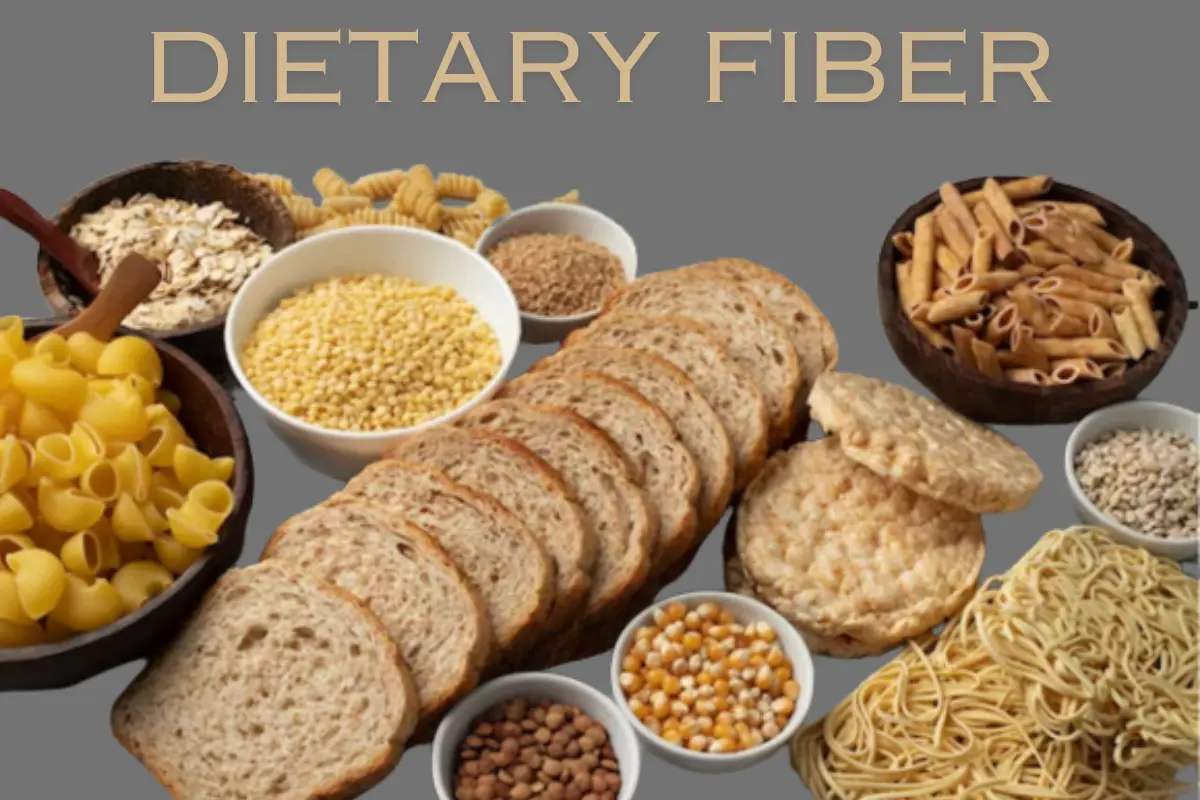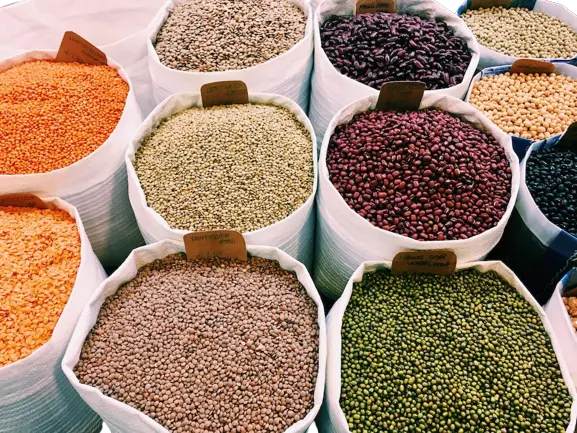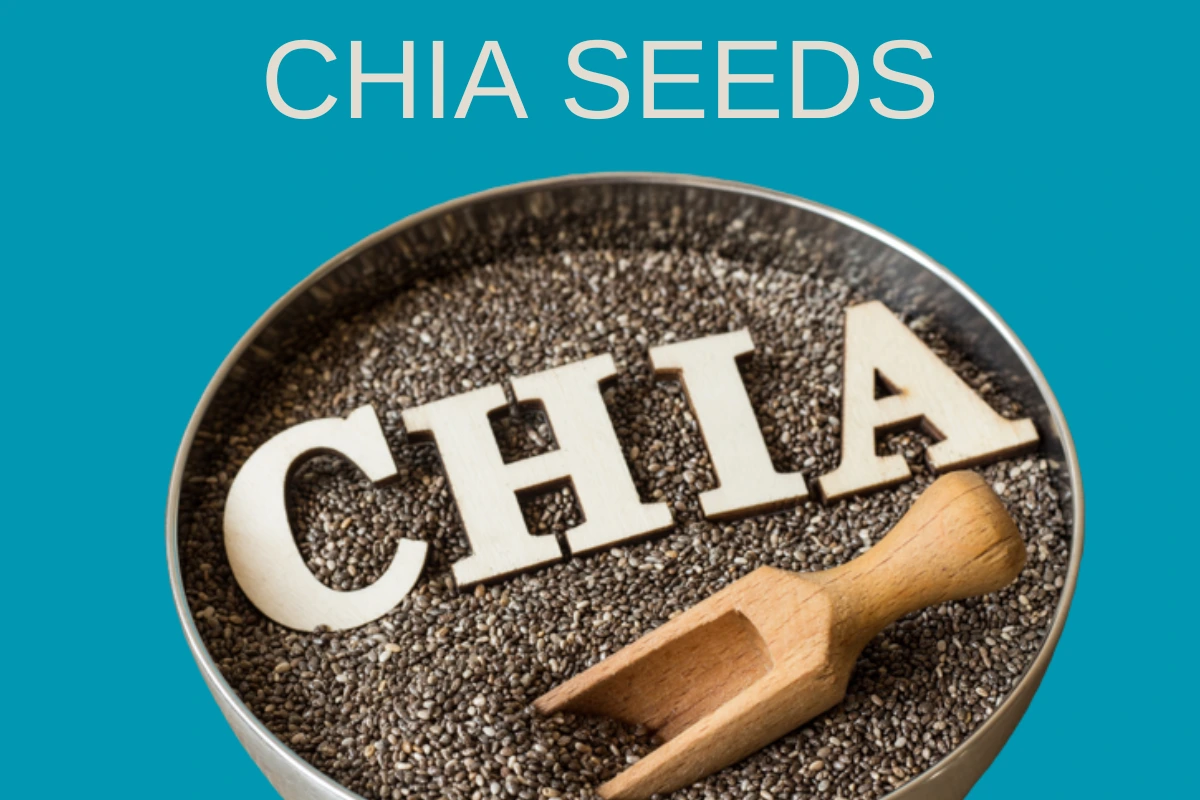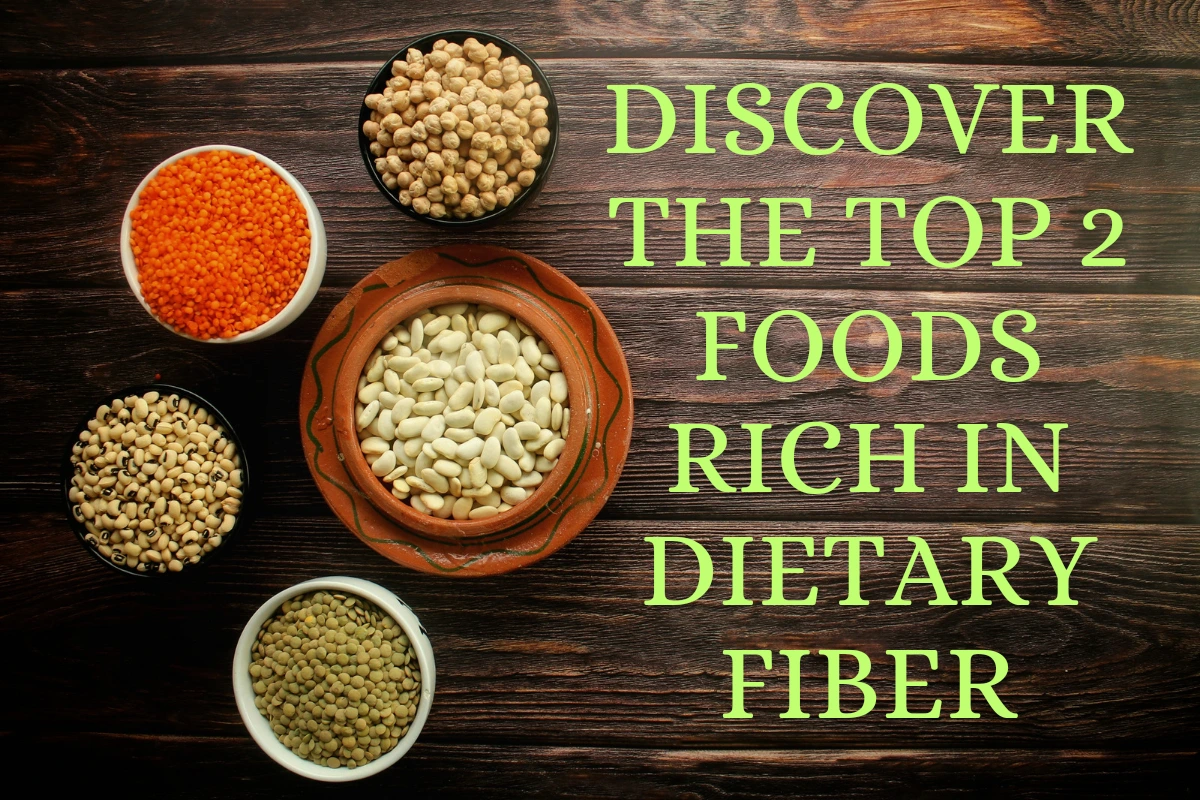Introduction
To lead a healthy life one should concentrate on the daily intake of dietary fiber. An often overlooked mineral with critical importance of body’s well-being. This article will examine dietary fiber: what it is, why it’s needed, and the two best foods containing lots of dietary fibre which could be easily included in your diet. essay writings.
Let’s talk about something really important for our health – dietary fiber. Fiber is like a superhero in our food, quietly doing many good things for our bodies. We’re going to learn why it’s essential and how it can make us healthier. Roughage or bulk, which is simply the non-digestible part of plant foods which passes through and provides all sorts of health benefits. Fiber is derived from fruits, pulses, whole cereals, legumes, nuts, and seeds, and is an integral part of healthy diet.

The Importance of Dietary Fiber in the Diet
Now, let us discuss on why fiber matters in our food. Our bodies have a helper in fiber. It is also very useful because it performs various benefits to us such as ensuring that the stomach and intestine are in a healthy state. Here’s why it’s essential:
- Happy Tummies: Fiber assists us in regular bowel movements and avoids abdominal discomfort.
- Managing Our Weight: It is filling; so we have lesser intakes that helps to weigh normally.
- Caring for Our Hearts: Certain fiber helps with cholesterol in the bad of blood; this supports our heart health.
- Balancing Sugar: This allows one’s body to absorb sugar at a slow pace, which works well for diabetics.
- Tummy Friends: The good bacteria love fiber as their food and they thrive with fiber to make the fiber happy.
- Protection from Sickness: Fiber-rich food can significantly reduce a person’s risks of developing diabetes, cancer, or heart-related diseases.
Thus, fiber in our food is equivalent to having a good friend with us in assisting us become healthy and strong.”
What is Dietary Fiber?
Non-absorbable carbohydrates known as dietary fiber constitute food items like fruits, veggies, whole grains, beans and seeds. In contrast with other types of carbohydrate, fiber cannot be digested or absorbed by our digestive system. However, most parts of the food go down the digestive tract unchanged and carry out different important roles down there.
Types of Dietary Fiber
Dietary fiber is typically classified into two main categories: soluble fiber and insoluble fiber. The category of fibers also determines their relationship with water.
1. Soluble Fiber: This is a type of fibure that solves in water resulting into a gel substance. It also reduces blood cholesterol and helps in controlling blood sugar. Soluble fibers are prevalent in oats, barley, beans, and some fruits.
2. Insoluble Fiber: This insoluble fiber does not dissolve in water and provides bulking to the stools leading to the prevention of constipation and also ensures regular bowel movements are achieved. Insoluble fiber can be found in whole grains, vegetables, and wheat bran.
The Top 2 Foods Rich in Dietary Fiber
It is now vital for us to explain a reason why dietary fiber should be an integral part of our diet.
1. Lentils
The cultivation of lentil, which belongs to the group of legumes goes back 8000years. Many culinary practices thrive with the addition of dietary fibre which makes them an important part of healthy diets. Mostly, lentils are made up of carbohydrates, however, they have high levels of soluble and indigestible fibers. Here are some of the key reasons why lentils are an excellent source of dietary fiber:
Lentils are a kind of bean in the order of legumes known as Fabaceae. These seeds are tiny but shaped like lenses and normally appear as green, brown, or even bright red. The importance of lentils as part of many nutritious diets the world over stem from its multiple uses.
Lentils are high in fiber which is one of its major advantages. Fiber is a form of undigestible carbohydrates in our bodies. It is very important for digestion because, it ensures that your bowels work regularly hence avoiding constipation. Apart from that, fiber plays a role in managing blood sugar, reducing cholesterol as well as promoting satiety hence aiding in weight management.
Plant-based proteins in lentils make them a suitable option for vegetarian people. Protein helps in building and repairing muscles, as well as, maintaining tissue integrity while also contributing to good immunity.
Lentils are good source of folate, iron, potassium, and magnesium with respect to vitamins and mineral content. Folate contributes to cell growth and development in the body while iron helps in body’s transportation of oxygine. Potassium helps in controlling blood pressure while magnesium participates in numerous biochemical processes within the body.

High Fiber Content: Dietary fiber provided by one cup of cooked lentil is 15.6 grams This almost equates to half the recommended amount of fibre per day for an adult.
Balanced Soluble and Insoluble Fiber: Because lentils have both soluble and insoluble forms of this nutrient, they are useful in keeping the gut healthy as well as helping control cholesterol levels.
Blood Sugar Management: Lentils are among foods that contain soluble fibers which aid in stabilizing the blood sugar thus preventing high and low spikes in blood glucose.
Heart Health: Lentils are rich in soluble dietary fiber which lowers LDL or bad cholesterol and minimizes heart diseases.
Weight Management: Lentils are very filling and may support weight control because they can make people feel fuller longer and therefore eat fewer calories as well.
Nutrient-Rich: Lentils also contain protein, iron, several vitamins, and minerals hence they are healthy legumes worth considering.
It is possible to incorporate lentils into different meals such as soups, stews, salads and vegetables. Given their wide array of uses in a kitchen, they can easily be fit in one’s daily diet.
2. Chia Seeds
In recent days chai seeds have become popular super food henceforth. These tiny seeds contain crucial vitamins and minerals such as dietary fibre. The plant Salvia hispanica gives people chia seeds that came originally from Central and South America. The small seeds have good sources of fiber, proteins, omega-3 fatty acids, and other vitamins and minerals. Omega 3 fatty acids are very important nutrients that prevent inflammatory diseases and enhance brain health.
Chia seeds possess a distinctive characteristic whereby they swell and turn into a viscous state upon coming in contact with liquid. Therefore they become ideal component of producing healthy pudding, smoothie and as replacer to eggs during baking. Antioxidants are another compound present in chia seeds that protect body cells against damage by such molecules known as free radicals. They have been shown to help in lowering cholesterol and reducing high blood pressure, which ultimately contributes to proper heart functioning.
Due to its high content of fibre, adding chia seeds into your diet may be helpful in promoting proper digestion. This is because they assist in maintaining regular bowel movements while inducing satiety thus could be used for weight loss. You can also have chia seeds by mixing it with yogurt, oats, and even sprinkling it in your salad or smoothie. They are slightly sweet and possess a nutty taste which goes well with many foods.

Here’s why chia seeds are considered one of the top foods rich in dietary fiber:
Exceptional Fiber Content: It is one of those richest sources of fibers. A single ounce (approximately two tablespoons) of chias seed consist of 10.6 grams of dietary fiber.
Soluble Fiber Dominance: The majority of chia seeds contain soluble fibers that turn into gelling agent after added in liquids. The gel serves as a delay in digestion hence you feel satiating and satisfied for longer hours.
Omega-3 Fatty Acids: Apart from fiber, chia seeds also provide omega-3 fatty acids in significant quantities and this is essential in ensuring a healthy heart and brain function.
Hydration and Satiety: These seeds are capable of absorbing up to ten times their weight and promote hydration leading to a complete feeling.
Blood Sugar Control: Chia seeds have a jelly like structure, which may be significant in regulating the blood sugar level that is helpful in diabetics.
Versatility: Because of their versatile nature, it is quite simple to incorporate chia seeds into numerous recipes such as smoothies, oatmeal, yogurt, and even baked goods. Additionally, they may act as a replacement for egg in different recipes if one is a vegan.
Adding chia seeds to your meal is a great alternative for those looking to increase their fiber intake and gain more nutrition benefits.
How to Incorporate These Fiber-Rich Foods into Your Diet
Incorporating lentils and chia seeds into your diet is relatively easy and can be done in various ways:
Lentils:
Soups and Stews: Incorporate cooked lentils in your favorite soups or stews to complement protein and fiber content.
Salads: Use cooked and cooled lentils with fresh vegetables, herbs, and light dressing to prepare tasty and healthy salad.
Side Dishes: Accompany your main course meal with lentils seasoned with herbs and spices to serve on the side.
Lentil-Based Dips: Mix cooked lentils, garlic, lemon juice, and olive oil to produce delicious and fibre-enriched dip.
Veggie Burgers: Instead of meat, use lentils for home made vegetarian burger as a source of plant based protein and fiber.
Chia Seeds:
Smoothies: Incorporate chia seeds in a glass of smoothened vegetable blend or mix in a tablespoon of the same into your smoothie every morning to increase omega 3 and provide additional fibre.
Overnight Oats: Create tasty overnight oats by mixing chia seeds with oats and any type of milk; add some fruits and sweeteners to these oats.
Chia Pudding: Mix chia seeds with almond milk, adding sweeteners for a delicious chia pudding which can be eaten as an evening or morning refreshment.
Yogurt and Parfaits: Use chia seeds as topping on a yoghurt or mix with other ingredients in a parfait for more crunchiness and extra fiber.
Baking: Use chia seeds to bake muffins, pancakes, or breads to make them fibrous.
Lentils and chia seeds are equally great multi-purpose ingredients that will fit your diet without destroying its flavour and ease.
Foods Rich in Dietary fiber Vedio tutorial for you:
https://youtu.be/3S62jpW6jqI?si=8CbdaQbBFrIB1zAd
Conclusion
The dietary fiber forms one important part of a proper diet as it is associated with some health benefits such as maintenance of good digestion and reducing chances of getting diabetes. Two of the best dietary high-fiber foods include lentils and chia seeds. Adding these products into your food will make it easy to supply your body with a lot of fiber and its benefits. Make sure you take plenty of fiber, but do it under balance diet.
FAQs
What food has the highest amount of dietary Fibre?
When it comes to dietary fiber, the food that has more of it is split peas.
How much fiber per day?
For healthy adults, 25 to 30 grammes of fibre per day are recommended for optimal digestive and bodily functions.
What fruit is highest in fiber?
Of all fruits, raspberries are among the highest sources of dietary fiber. For every cup of raspberries, you consume, you add up to eight (8) grams into your fiber diet plan. Also, there are other fruits such as blackberries, pears and apples which have equally more significant levels of fiber content.
Is A Banana high in fiber?
Granted, bananas contain a lot of dietary fibre, but not as much as certain other fruits and vegetables. Three grams of fiber is usually in a medium-sized banana.
What is dietary Fibre Class 6?
In a typical Class 6 environment, dietary fiber is presented as an insoluble carbohydrate contained in plant foods that plays a role in proper digestion, and overall good health. Specific curriculum content may vary
